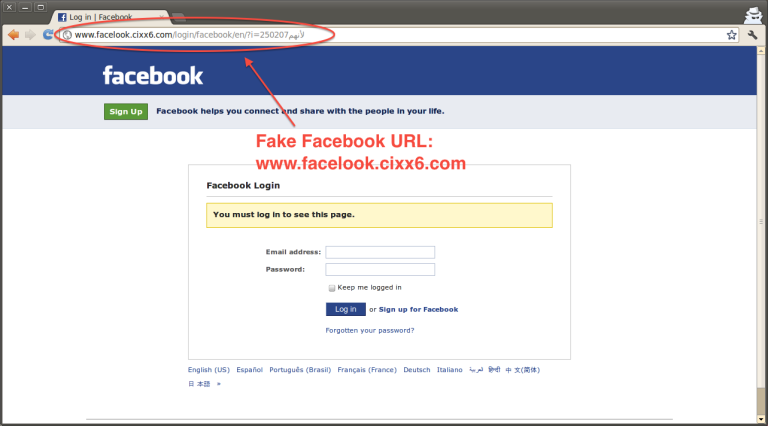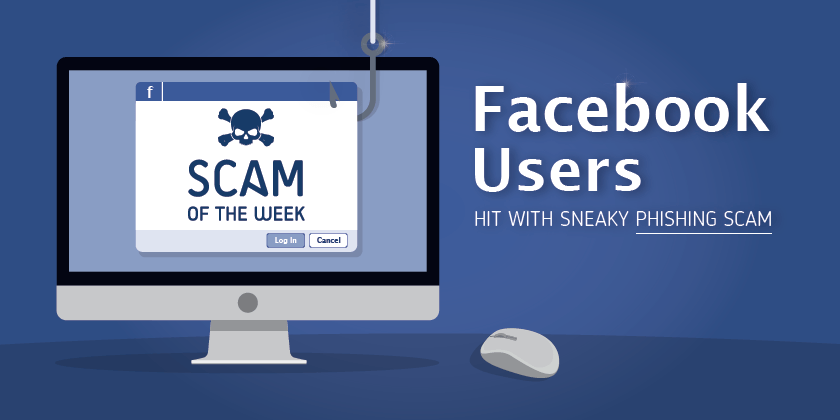Phishing is the most commonly used method to hack Facebook. The most widely used technique in phishing is the use of Fake Log in Pages, also known as spoofed pages. In this post, you will learn about what is phishing, phishing attack, types, and techniques, how we can prevent such attacks and phishing facebook page.
- Delete the file named default.php after that you need to upload index.htm and post.php file. Click on upload files button and upload both files one by one. Now click on index.htm which will look like same as that of the original Facebook page. This is your phishing page of Facebook.
- There are obvious clues that this is a phishing scam. For one, Facebook doesn't send e-mails like this. It may send an e-mail with a link where the user can reset the password, but not an e-mail.
- To create a phishing page, first open your browser and navigate to the Facebook login page. Then, on the browser menu, click on File and then on Save page as. Then, make sure that you choose a complete page from the drop-down menu. The output should be an.html file. Now let’s extract some data here.
Phishing otpbypass otp-phishing otp-verification informationgathering iplocator advancephishing latest-phishing zomato-phishing ola-phishing paytm-phishing hotstar-phishing ubereats-phishing facebook-otp amazone-tfo google-otp linkedin-otp paytm-otp whatsapp-otp tiktok-phishing. Last updated on January 7th, 2020A warning is spreading claiming that hackers in China have designed pictures or movies that hide “phishing codes” and receiving one will result in hackers being able to steal information from the recipient’s device. FALSE An example of the warning can be seen below. Morning Wishes/Messages. Please read this warning.
You Can Also Read
What is Phishing?
It is the most common method used by hackers to hack accounts and an example of social engineering techniques that are used to deceive users. A phishing attack can be used to hack any type of accounts (almost most of the accounts can be hacked using this technique).
Phishing is a fraud and illegal activity used to obtain some bank account credentials, social account username, email address and passwords, credit card and many more fraud activities.
Hackers create a fake phishing page that looks like the original official website and due to this many people enter their information. Gun game redux.
Hackers mainly use email messages, Instant messaging platforms like Facebook, WhatsApp, WeChat, Hike, etc. to send the links for hacking your passwords.
In a survey, It is found that phishing is one of the most common techniques used by hackers to hack accounts and the success rate of this technique is high. But nowadays people are getting aware of this techniques but we need to update ourselves from time to time from the latest hacking methods.
Suggested: Increase real Instagram followers using this tool for free

Phishing Attack
The phishing attack is one of the dangerous fraud activities that can steal your important and sensitive information such as credit cards, social accounts, website admin passwords, etc.
Facebook Phishing Text
A phishing attack can be used for different purposes like hacking facebook account, Instagram account, credit card numbers, bank account information, and for many other purposes.
Facebook phishing scams are widely used and it is the easiest method of hacking someone’s account. These fake login pages look like the original login pages of sites like Yahoo, Gmail, MySpace, etc. The victim is fooled to believe the fake Facebook page to be the real one and enter his/her password. But once the user attempts to log in through these pages, his/her Facebook login details are stolen away.
You can make any type of phishing login page to hack facebook using phishing. It is a criminal offense and illegal activity so don’t try to anyone. You can try this on your own account or system to learn this technique but do not try it on anyone else.
Suggested: WiFi hacking complete tutorial guide – Hack nearby WiFi password using this tool
Types & Techniques of Phishing

Types and techniques that are commonly used in this type of attack.
Social engineering
In this technique, users can be encouraged to open attachment or links send to their email address or on instant messaging. When users open this link or attachment they got infected by a virus or hacked.
Clone phishing
Clone phishing is a kind of phishing attack whereby a genuine, and recently conveyed, an email containing a attachments/link has its substance and beneficiary address taken and used to make a practically indistinguishable or cloned email.
The link inside the email is supplanted with a malevolent form and after that sent from an email address parodied to seem to originate from the first sender.
It might profess to be a resend of the first or a refreshed variant to the first. This strategy could be utilized to turn from a recently tainted machine and addition and a dependable balance on another machine, by abusing the social trust related to the induced association because of the two gatherings accepting the first email.
Voice phishing
Voice phishing is a good example that not all phishing attack requires to create a fake page of a website to get users password and email ID. In this phishing attack, hackers sent a message to your phone that claims to be from the bank, in which it says that you have some problems related to the bank account and you need to dial a customer number (customer number will be given in your message) to fix the problem.
But this message does not belong to the official bank. It is a trap to get your account bank number and password. When the user dials this number (hackers number which users may think official bank number), Hackers told users to enter their account numbers and PIN.
This type of phishing attack is called voice phishing. This phishing attack is done using VOIP.


Suggested: 3 techniques to hide Your IP Address
Spear phishing
In this phishing attack, hackers target specific individuals by collecting personal information and data of the individuals to increase their chances of success.
Other techniques
- Link manipulation
- Whaling
Suggested: 10 Best educational apps for students – Learning apps to Learn new things
How to prevent Phishing attack
1. Unknown mails
Do not open unknown email messages or links.
2. Attachments
Do not click or download any unknown attachment send by someone in your mail. If you know that the file is safe then you can open it.
3. Two-Step Verification (2-Step Verification)
Always use 2 step verification for all of your accounts such as Gmail, Facebook, WhatsApp. Two-step verification protects you from hackers. Even if they successfully hacked your account they can’t log in to your account. They need to enter the digit code which will be sent on your phone.
Facebook Phishing Site
4. Antivirus
Use good antivirus software, It can help you to protect all your sensitive information by detecting the virus, fraud links, phishing attack, ransomware attack, etc.
Antivirus also protects you when you are doing some online activities. If the antivirus found some potentially dangerous websites that can steal your information. It will automatically block such websites and files from the Internet.
5. Check the URL
Check the URL of the website before entering any information. A phishing page will look like a real one but you can easily identify them by checking the URL.
6. Do not share OTP
Do not share your bank OTP with anyone or do not enter any sensitive information such as bank account number and password over the voice call.
7. Game links
Facebook Phishing Download
If your friend sends you a link and invited to play a game then before entering any information check that the link URL is real or fake one.
8. Do not login to your social media accounts using Email links
Do not log in to your account social media account using the mail message as it can be a hacking link to trick you and get your password. Cubefieldunblocked games.
You can find more tips to prevent yourself from hacking.
See Also:
phishing is a criminal offense and illegal activity so don’t try to anyone. This tutorial is for educational purpose.
Facebook Phishing Link
For any help, you can leave a message on the Facebook page.
